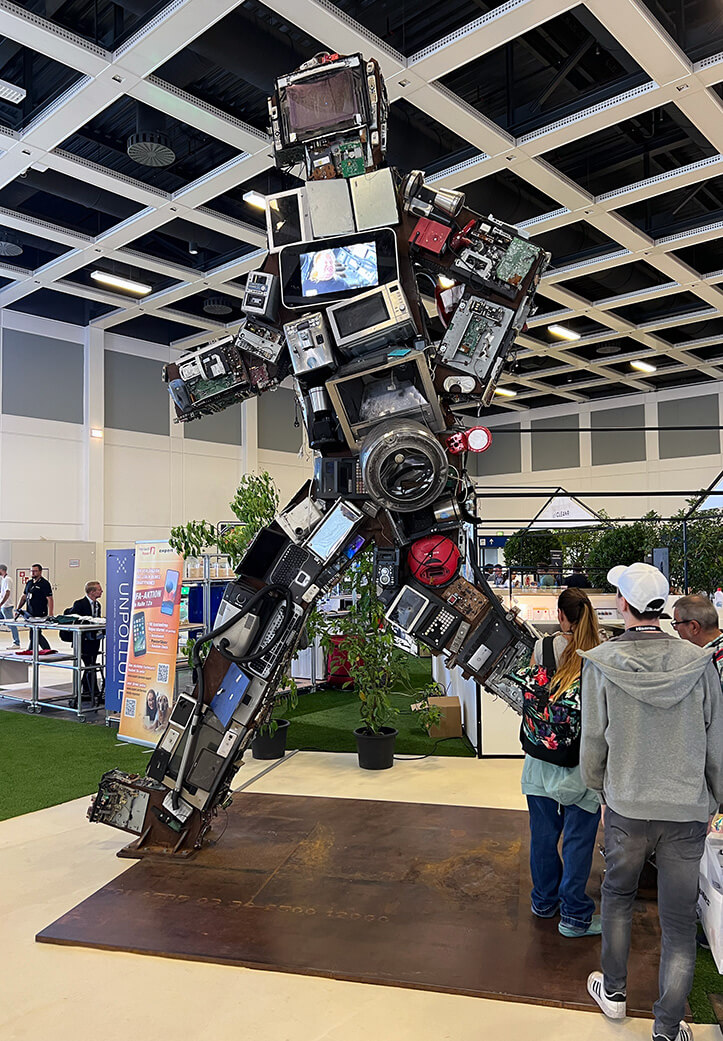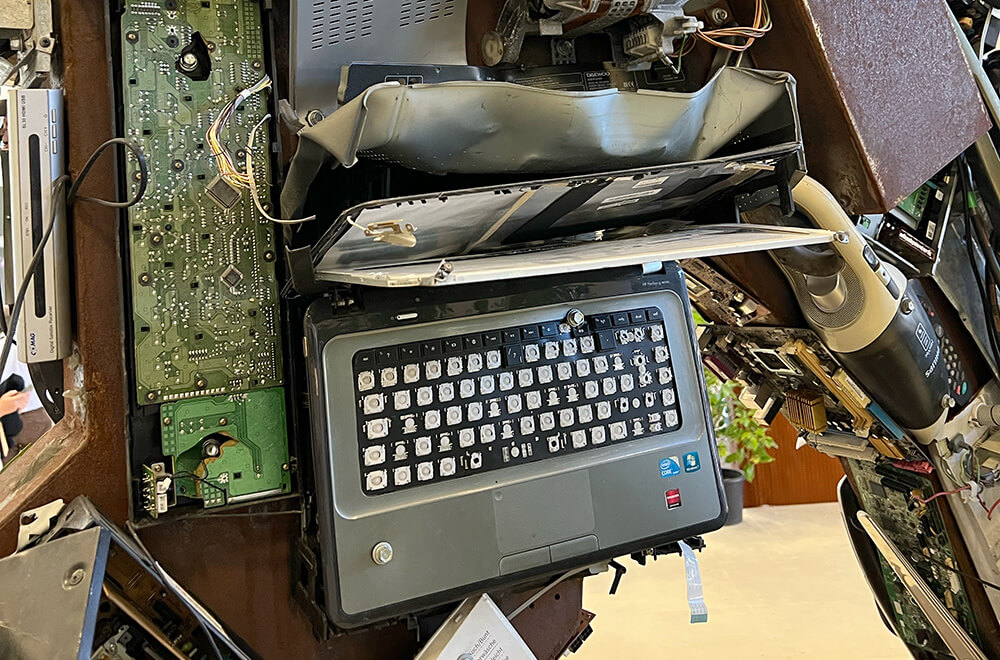

HA Schult created the Wertigigant from discarded electronics.

For the first time this year, the IFA Berlin consumer electronics and home appliances trade show dedicated an entire hall to the topic of sustainability — and made the issue of e-waste larger than life. The Sustainability Village’s undeniable mascot was the Wertgigant, or Value Giant, a nearly 20-foot-tall, 1-ton sculpture made of scrapped cell phones, computer monitors, keyboards, circuit boards, washer parts, vacuum cleaners, and at least one coffee maker, among other discarded items.
The giant, placed just yards from the Sustainability Village stage, towered over attendees and even some booths at the show, held Sept. 6-10 at Messe Berlin in Germany. A sign next to the giant shared its message with consumers: “Don’t throw away what you still need.” Other signs conveyed sobering stats about the amount of waste made by throwing out old devices — Germans create more than 415,000 tons of e-waste annually, according to a 2022 study by specialty insurance company Wertgarantie, or Value Guarantee.

“At some point, there will be no other option,” Monique Lempers said of our need to move to a circular economy.
The Wertgigant itself represents the amount of electronic waste that German households produce every 72 seconds. German environmental artist HA Schult — who appears on a video screen below the statue’s colossal neck warning viewers of the dangers of our throw-away economy — created the sculpture in 2021. It has since traveled throughout Europe as part of a campaign to draw attention to the negative impact of disposed electrical appliances and devices on the climate. Value Guarantee, who sponsored the creation of the giant and its tour to encourage repairs, offers insurance that covers the repair of products to extend their use.
On the day I attended IFA, I saw many booths where manufacturers made a point of proving how green their brands are by introducing products that use less energy, are made partly from recycled materials, or are easy to repair. While impressive, others were hawking their “new and improved” electronics, no doubt to replace earlier versions.
How can we reduce electronics waste when technology advances so quickly and there is such a high demand for the latest and greatest version? I asked Monique Lempers, chief impact officer at Dutch electronics manufacturer Fairphone, which produces long-lasting, easy-to-repair smartphones and related products, after she had taken part in a panel discussion titled “The Circular Economy — Starting at Design Through to Delivery, Return, and Reuse.” There’s still a lot of work that needs to be done to change consumer habits — and manufacturers’ business models — but a more circular economy is inevitable, Lempers said. “At some point, there will be no other option,” she said. “The resources used to make electronics are depleting rapidly, so designing products with repairability and longevity in mind will become increasingly important.”
Curt Wagner is digital editor at Convene.
